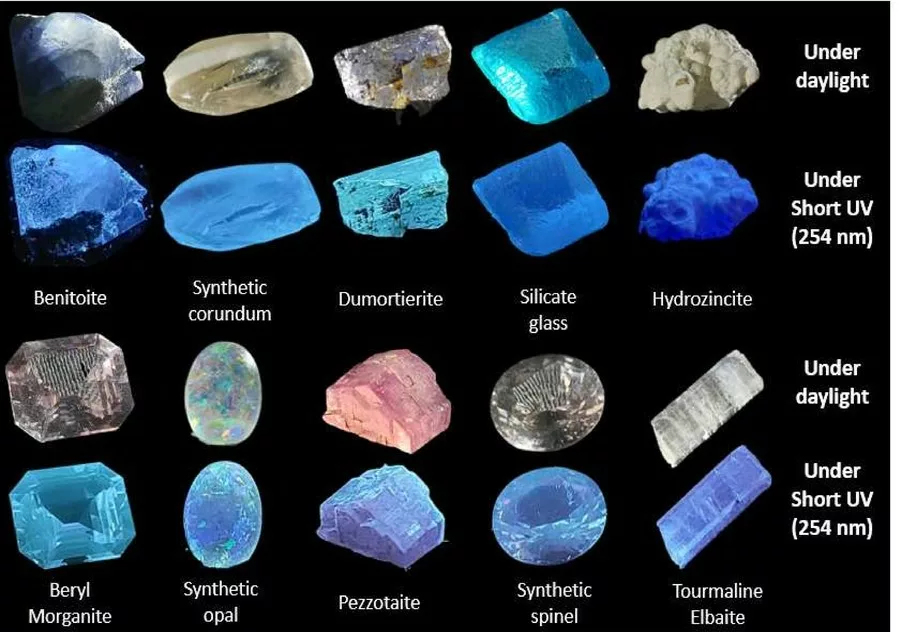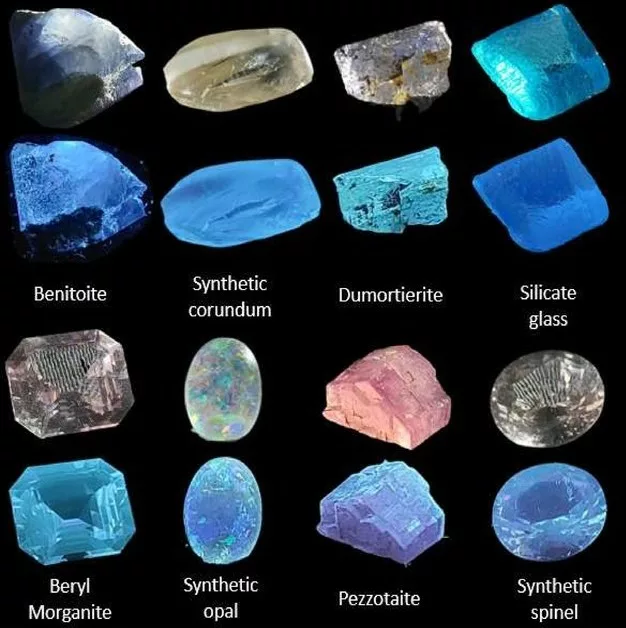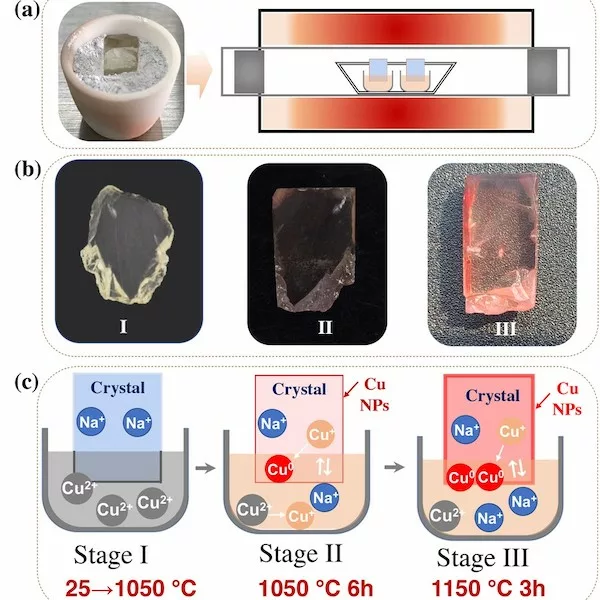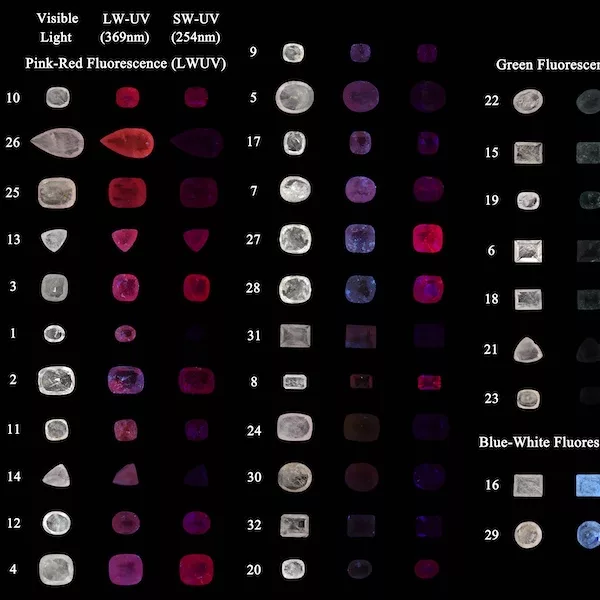Blue shortwave luminescence of gems: the role of titanate groups
The purpose of this study is to describe Blue Shortwave-UV excited Luminescence (BSL) in gems and related materials, and demonstrate the role of titanate groups in a number of gems (Vigier et al., 2023). These titanate groups with the formula (TiO6 )8- contain a central Ti4+ cation surrounded by six oxygen atoms at the corners of an octahedron.
Blue shortwave-UV luminescence is considered unusual in gems, as fluorescence generally is stronger in longwave than shortwave ultraviolet. However, there are well documented cases of BSL in gems, such as for example scheelite and benitoite. In scheelite it is due to the tungstate group of this calcium tungstate (Theisen & al, 1988). In benitoite, it is the titanate group which is the activator and thus responsible for the emission (Gaft & al, 2004). Surprisingly, the reason for BSL of sapphire is still under discussion, i.e. whether it is related to titanium (titanate groups or Ti3+) or color centers (oxygen vacancies). For our study we chose to use sapphire as a reference material, as most articles agree that the well-known sapphire BSL is attributed to titanate groups. To bring further proofs of the role of titanate, theoretical calculations are starting to weigh in on the interpretation. For example in synthetic baddeleyite ZrO2 , it has been demonstrated through density functional theory (DFT) simulations that BSL is due to titanate groups, and not to Ti3+ transitions or oxygen vacancies related defects (Lafargue-Dit-Hauret et al., 2021)

We studied in detail the emission of seven minerals and gems displaying BSL, as well as three references in which BSL is caused by titanate groups (TiO6 ): benitoite, Ti-doped flame fusion synthetic sapphire and spinel (Figure 1). Emission (under 254 nm shortwave excitation) and excitation spectra were recorded and fluorescence decay times were measured. It is proposed that BSL in beryl (morganite), dumortierite, hydrozincite, pezzotaite, tourmaline (elbaite), some silicates glasses and synthetic opals is due to titanate groups, present at a concentration of 20 ppmw Ti or above. They all share a broad emission with a maximum between 420 and 480 nm (2.95 to 2.58 eV) (thus perceived as blue), and an excitation spectrum peaking in the shortwave range, between 230 and 290 nm (5.39 to 4.27 eV). Furthermore, their luminescence decay time is about 20 microseconds (from 2 to 40). These three parameters are consistent with a titanate emission, and to our knowledge, no other activator
References:
- Lafargue-Dit-Hauret, W., Schira, R., Latouche, C., & Jobic, S. (2021). Theoretical calculations meet experiment to explain the luminescence properties and the presence of defects in m-ZrO2. Chemistry of Materials, vol. 33, n° 8, pp. 2984-2992.
- Vigier, M., Fritsch, E., Cavignac, T., Latouche, C., Jobic, S. (2023) Shortwave UV Blue Luminescence of Some Minerals and Gems Due to Titanate Groups. Minerals, Vol. 13, pp. 104- 121. https://doi.org/10.3390/min13010104
- Theisen, A.F, Hemphill, W.R (1988) Effect of the W:Mo ratio on the shift of excitation and emission spectra in the scheelite-powellite series. American Mineralogist, vol. 73, no 9-10, p. 1145-1154.
- Gaft, M., Nagli, l., Waychunas, G. (2004) The nature of blue luminescence from natural benitoite BaTiSi309. Physics and Chemistry of Minerals, vol. 31, no 6, p. 365-373.




